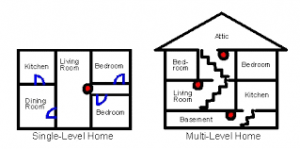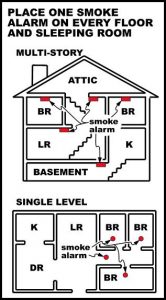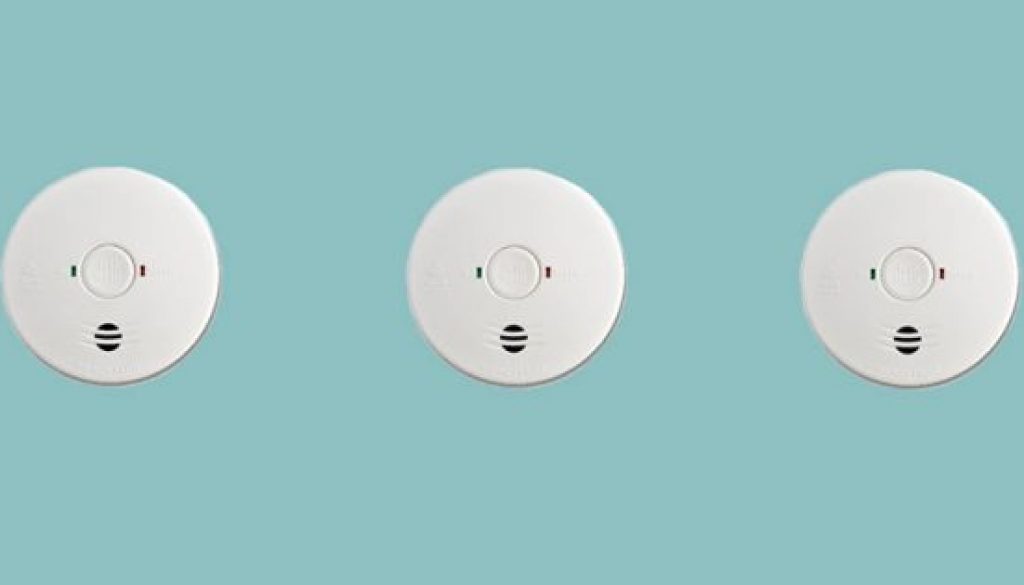So, you have your smoke alarms and you need to find the best place in your house to place them. Most people think right near the kitchen is the way to go but, there are a few reasons why that may not be the best spot for household fire safety and functionality.
The theory behind smoke alarms is that they wake you up while you’re asleep. If there is a fire in the kitchen it is probably because you are using it so you are around. You want the smoke alarms to be as close to the bedrooms as possible and where possible, on the exit paths from the bedrooms.
Smoke will get a round a house quite quickly so its more about positioning the alarm strategically so it wakes you when your asleep not exactly where a fire will start.
When installing your alarms there are a few key factors you need to keep in mind;
Where practical the alarm must be placed on the ceiling. That’s always a good start.
Smoke alarms must not be placed;
- Within 300mm of a corner of a ceiling and a wall.
- Within 300mm of a light fitting
- Within 400mm of an air conditioning vent
- Within 400mm of the blades of a ceiling fan
There are special requirements for stairways, sloping ceilings, and ceilings with exposed beams. Specific requirements are explained in the Building Fire Safety Regulation 2008.
Up until 2027 smoke alarms must be installed;
- On each storey of a dwelling;
- In hallways which connect bedrooms and the rest of the dwelling; or
- If there is no hallway, between the bedrooms and other parts of the storey; and;
- If there are no bedrooms on a storey at least one smoke alarm must be installed in the most likely path of travel to exit the dwelling.

From 2027 smoke alarms must be installed;
- In each bedroom; and
- On each storey of a dwelling;
- In hallways which connect bedrooms and the rest of the dwelling; or
- If there is no hallway, between the bedrooms and other parts of the storey; and;
- If there are no bedrooms on a storey at least one smoke alarm must be installed in the most likely path of travel to exit the dwelling.

